Phonics stocking stuffer
8 Replies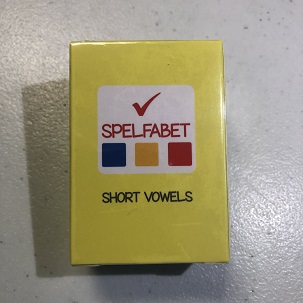
It’s the first day of summer here in Melbourne, after a long, hard year of lockdown. We’ve been mostly working online since March, which was quite a learning curve, so I’ve had almost no energy for blogging or the website (sorry). We’ve now had no new COVID-19 cases for a month (hooray! it can be done!) so are cautiously looking forward to the silly season.
If you’d like a simple, inexpensive phonics game as an end-of-year school activity or Christmas stocking stuffer, you might like my new printed (no laminating or cutting up required!) word-building card game. Lots of kids didn’t learn very well this year thanks to COVID-19, but we’re all pretty weary, so it seems like a good time to build skills and knowledge through games.
Here’s a 90-second video about the game:
Children who only know one sound for each letter of the alphabet will need adult help with the sounds for the consonant digraphs and trigraphs in this game (sh, ch, th, wh, ll, ss, ck, ng, tch, dge), but children who know these spellings can play more independently.
If a child builds a word they don’t know, you might like to tell them what it means and put it in a sentence or two, to build their vocabulary, or just skip over it if it’s not a common word.
Older/more advanced learners can put up to three adjacent consonants in their first words (e.g. bench, truck, splint and strengths), which are then much harder for their opponent to change. Knowing the consonant combinations used in English syllables helps with spelling and reading.
The game – 52 child-sized cards and 2 instruction cards in a box – costs $12 including GST from our online shop, plus $9.20 for packing and postage to anywhere in Australia, or you can click-and-collect from our office in North Fitzroy. Please ring first (03 8528 0138) to make sure our reception will be staffed when you visit, and it won’t be waiting room Peak Minute.
Sorry we can’t currently ship this game overseas. The DSF online shop also sells this game, and may take overseas orders. You can also get this game from the lovely people at Childplay toy shop in Clifton Hill, where I never fail to find the best gifts for kids.
The download-and-print version of this game is also still available, either by itself or in a set of three games, but you have to provide the cardboard and colour printer, laminate it and cut it up, and the end result isn’t as robust or professional-looking.
An earlier version of this game contained spellings like ‘v’, ‘j’, ‘ff’ and ‘zz’ which aren’t in many words, so that version was a bit harder to play. These spellings have been replaced by more common ones in the new game, so it’s easier and more fun for beginners and strugglers. I’m hoping to be able to produce more printed resources in future, if these cards are a success.
More phonics playing cards
3 Replies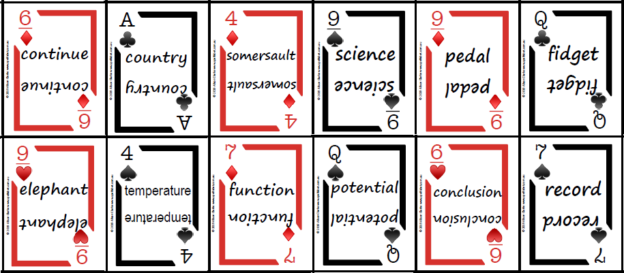
We have a new set of download-and-print decks of phonics playing cards, this time targeting more advanced spelling patterns. The cards are still child-sized (5 X 6.5cm) with words facing both up and down, making them easy to read from either side of a table.
The first few decks each target one sound (phoneme) spelt multiple ways:
- “you” as in “music”, “argue”, “dune”, “stew”, “Europe”, “view”, “beauty”, “nuisance”, and “vacuum”.
- “u” as in “much”, “front”, “cousin”, “blood”, and “does”.
- “o” as in “doll”, “swamp”, “fault”, and “cough”.
- “s” as in “since”, “cent”, “purse”, mess”, “scene”, and “whistle”.
- “l” as in “later”, “grill”, “beetle”, “final”, “model”, “lentil”, and “idol” (linguistics purists, these words contain only syllabic /l/ after an alveolar stop).
- “j” as in “joint”, “legend”, “large”, “judge”, and “adjust”.
- “f” as in “drift”, “effect”, “graph”, “laugh” and “sapphire”.
Free early phonemic awareness, phonics and handwriting workbook
10 Replies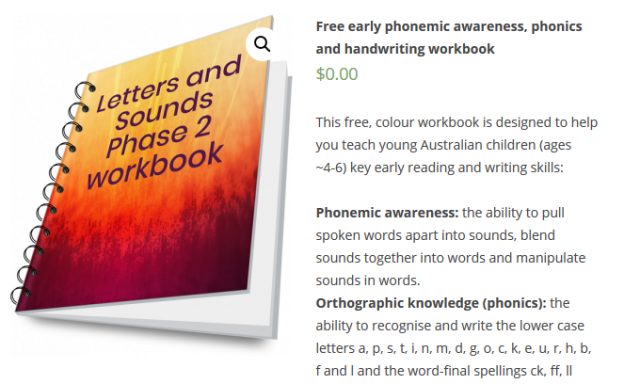
Last week, I read my state education department’s booklet advising parents on how to help children with literacy and numeracy. I understand it will be in the Prep bags given to all Victorian children starting school in 2019.
I was, frankly, appalled. The booklet mentions phonics only once, saying onscreen phonics games improve reading and “letter sound awareness”, whatever that is. It doesn’t mention phonemic awareness or handwriting at all.
A ton of scientific research has shown that phonemic awareness and phonics are key ingredients in getting literacy beginners off to a good start, along with work on vocabulary, comprehension and fluency, and that writing letters helps you remember them. (more…)
Free Learning Difficulties Including Dyslexia webinars
8 Replies
La Trobe University and the Victorian Department of Education have this year collaborated to run workshops across Victoria about learning difficulties including dyslexia. The workshops have been available to teachers and other Department of Education staff.
The information from these workshops is now being made available free online via YouTube as webinars. Wow. Amazingly generous of both the University and the Department, since most professional development of this type and quality is paywalled. So thanks to all involved.
The webinars are presented by Dr Tanya Serry from La Trobe University, and the workshops on which they are based were developed with Professor Pamela Snow, Ms Emina McLean and Assistant Professor Jane McCormack also from La Trobe, and Dr Lorraine Hammond from Edith Cowan University in WA. (more…)
Pom pom phonemes
2 Replies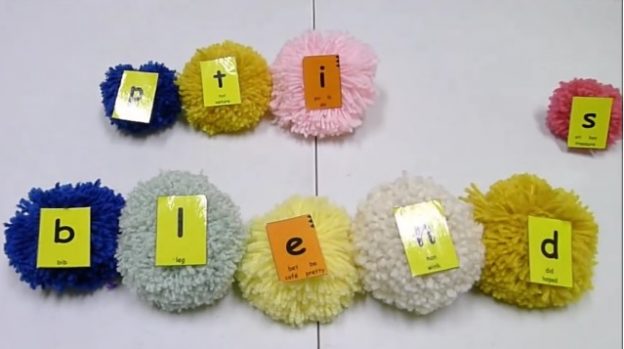
For a while I’ve been trying to think of a good way to represent individual sounds in words (phonemes) in a video.
First I tried using my toy fruit and vegetables. These showed nicely that actual productions of a phoneme (allophones) can be slightly different. A cob of corn is still a cob of corn, whatever its size or shape. An /n/ sound is still /n/, no matter where it’s found in a word.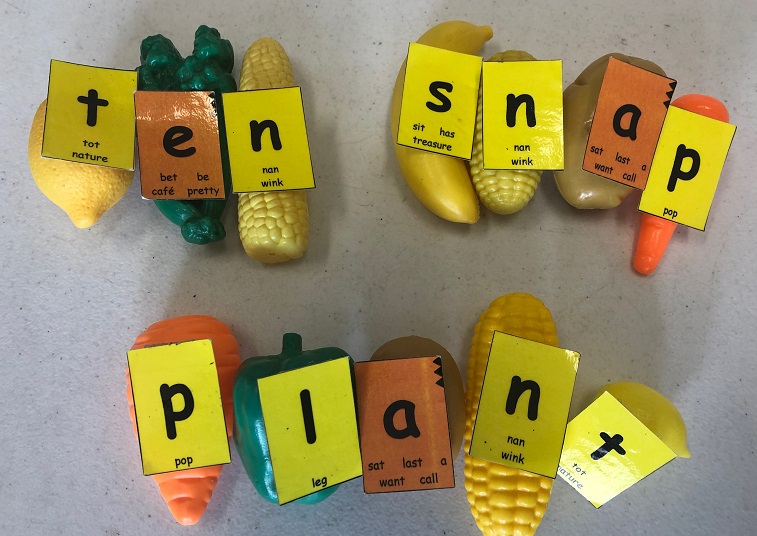
Phonemes are sounds AND articulatory gestures
20 Replies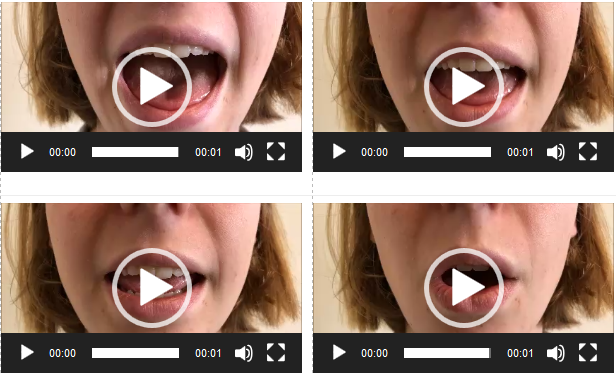
Phonemes are perceptually distinct speech sounds that distinguish one word from another, e.g. the “p”, “b”, “t” and “d” in “pie”, “by”, “tie” and “die”. They’re also articulatory gestures.
A 2009 article co-authored by reading guru Linnea Ehri says “awareness of articulatory gestures facilitates the activation of graphophonemic connections that helps children identify written words and secure them in memory.” Melbourne Speech Pathologist Helen Botham (Hi, Helen!), lists a number of references on her Cued Articulation website indicating articulatory awareness facilitates phonemic awareness.
I sit right across the table from my clients, so we can see and hear each other’s articulation well. It must be a lot harder to teach a whole class about phonemes, in order to link them to graphemes. Videos on the internet (including my own) about phonemes seem to put them all in one video, making them hard to isolate and repeat on a classroom interactive whiteboard.
I’ve thus filmed my utterly adorable and orthodontically photogenic niece Vivien (thanks, Vivien!) saying each phoneme separately. The 44 videos are below, each with example words which link to the relevant spelling lists on my website. (more…)
What are the 44 sounds of English?
1 Replies
For a long time I've been looking for a good, short, video about the 44 sounds of English, in my dialect, and organised by sound class not alphabetically. I haven't been able to find one, so now I've made my own.


